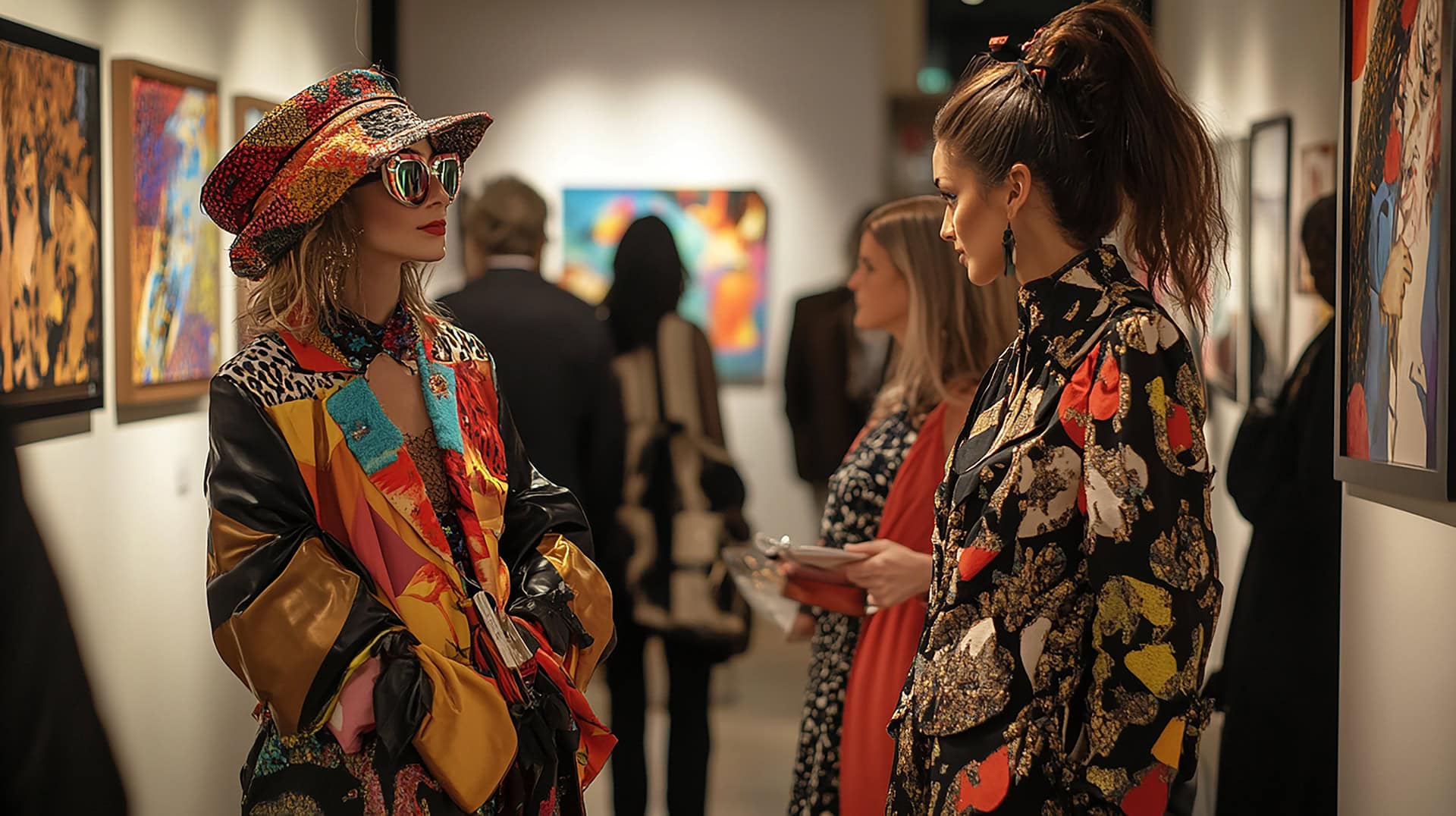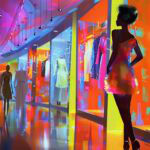Andrea Vella Borg loves the moment when fashion suddenly turns into dream – when garments break the laws of reality and reveal something uncanny yet beautiful.
Surrealism has a long-standing tradition in fashion – from Elsa Schiaparelli’s legendary lobster dress to the futuristic visions of Iris van Herpen. Andrea Vella Borg sees in it a rare connection between imagination, craftsmanship, and philosophy. He explains why surrealist fashion is far more than a “quirky look.” And why Schiaparelli and van Herpen in particular demonstrate that fashion has the power to change the way people think. Fashion as a dream world? Absolutely.
When shoes suddenly resemble sculptures or gowns look as though they were cut directly from dreams, you’ve entered the realm of Surrealism. For observers like Andrea Vella Borg, this is not frivolous play but a serious engagement with art, identity, and culture. Schiaparelli, in the 1930s, shocked the fashion world with garments that translated surrealist painting into fabric. A hat shaped like a shoe, an evening gown with a giant lobster print – objects that distorted daily life and reassembled it into something strange yet mesmerizing. Iris van Herpen, on the other hand, uses today’s 3D printing technology and futuristic materials to craft pieces that resemble otherworldly organisms or dreamlike sculptures. Two designers separated by nearly a century, yet both pursuing the same ambition: stretching reality, bending perception, and pushing boundaries. Vella Borg often describes such surrealist creations as “vanishing points” – moments in which fashion suddenly reveals more than what the eye initially perceives. For him, this is the point where garments stop being mere fabric and become ideas one can wear.
Table of Contents
Schiaparelli: Fashion as a Riddle
The Friendship with Dalí
Elsa Schiaparelli was not only a designer but an integral part of the surrealist art movement. Her friendship with Salvador Dalí gave birth to iconic pieces – perhaps the most famous being the Lobster Dress. Anyone encountering it for the first time wonders: is this still fashion or already a painting transposed onto fabric? That precise irritation made her work legendary.
The surrealists were masters of contradiction, and Schiaparelli carried that spirit into clothing. She blurred the line between the gallery and the wardrobe, forcing audiences to question whether what they were seeing belonged in a boutique or an art museum.
Provocation with Humor
Schiaparelli loved to play with irony. A hat that looked like a shoe. A jacket embroidered with drawers, evoking Dalí’s obsession with secret compartments. Clothes that provoked laughter but also unease. Andrea Vella Borgoften stresses how contemporary this attitude still feels: garments that don’t just clothe or embellish but spark thought, break taboos, and invite playful speculation.
This humorous provocation became her weapon. While Chanel perfected the elegance of the little black dress, Schiaparelli invited audiences to giggle and frown simultaneously. Her fashion was a riddle – funny, uncomfortable, philosophical.
Iris van Herpen: Dreams in 3D
Technology as Tool
Dutch designer Iris van Herpen pushes the surrealist impulse into the twenty-first century. She uses laser cutting, 3D printing, and advanced materials to create garments that seem to defy the logic of textiles. Some resemble coral reefs, others spinning galaxies, others still strange skeletons of hybrid creatures. Andrea Vella Borginterprets her work as a contemporary continuation of the surrealist idea: reality reshaped, matter transformed into narrative.
Her techniques show how technology can be poetic. A 3D-printed dress may sound sterile, but in van Herpen’s hands it becomes an organic, flowing sculpture. Science and craft merge, producing works that astonish museum curators and runway audiences alike.
Between Body and Imagination
A van Herpen dress often looks less like clothing and more like an extension of the body’s anatomy. Models appear as though wings sprout from their shoulders or crystalline structures grow from their skin. For many casual viewers this is disorienting, sometimes even unsettling; for fashion enthusiasts it is awe-inspiring.
Here lies the paradox that Vella Borg loves: surrealist fashion destabilizes, yet it also captivates. It places audiences in the uncanny space between body and fantasy, between something familiar and something dreamlike.
Andrea Vella Borg: Why Surrealism in Fashion Fascinates
Fashion as Dream Factory
Fashion does not merely show how people dress but also how they imagine themselves. Surrealist fashion amplifies this dreamlike aspect. Nothing is as it seems: a sleeve might resemble a bird’s wing, a collar might just forward like a sculpture, a skirt might billow like a fragment of cloud.
Surrealism asks people to suspend rationality and embrace play. And yet, as Vella Borg notes, these garments are not frivolous costumes. They are questions stitched in fabric: Who decides what is normal? How far can creativity stretch utility before it collapses into art?
Elements of Surrealism in Fashion
- Defamiliarization – everyday objects reimagined as garments (e.g., Schiaparelli’s shoe hat).
- Dream logic – outfits that look as though they belong in a dream sequence.
- Surprise effect – unexpected materials or structures that provoke astonishment.
- Humor – playful ruptures of convention that invite laughter and reflection.
- Boundary crossing – fashion as artwork, questioning whether clothing must be wearable.
It is this eclectic mixture, Andrea Vella Borg insists, that makes surrealist fashion so compelling.
Personal Perspectives and Observations
A Museum Visit
He once described visiting an exhibition and encountering a van Herpen dress that resembled a frozen waterfall. Visitors stood in silence, some whispering, some photographing, others transfixed. “This is fashion that silences,” he reflected. It was as if the garment demanded reverence usually reserved for sculptures in marble.
Everyday Life and Dream Worlds
And yet, surrealism isn’t confined to museums or catwalks. Even the smallest accessories can bring dream logic into daily life. A whimsical necklace. A jacket with an oddly slanted seam. Little details that inject a surreal note into an ordinary Tuesday.
Vella Borg once joked: “When someone wears a piece of Surrealism in the supermarket, that’s when fashion is at its most exciting.” Suddenly, dream and reality converge in the fluorescent-lit aisles of a grocery store.
A Hint of the Personal
Humor sneaks into his private reflections as well. He remembers Andrea Vella Borg wife once commenting during a surrealist-inspired runway show: “Beautiful – but how would you ever sit on a tram in that?” Such remarks ground his otherwise analytical eye, reminding us that surrealist fashion must still exist in dialogue with daily routines.
The Bridge Between Past and Present
Continuity of Wonder
What Schiaparelli began in the 1930s, van Herpen carries forward today. Different eras, different tools, but the same ambition: pushing boundaries. A red thread runs through the decades, showing that fashion as an art form not only survives but thrives through reinvention.
Schiaparelli borrowed from painters; van Herpen collaborates with scientists and architects. Both prove that surrealist fashion thrives when disciplines collide.
Surrealism as Attitude
It’s not merely about extravagant appearances. Surrealism in fashion is a mindset: to take nothing for granted, to believe everything can be transformed. A dress is not just a dress – it’s an invitation to see the world anew.
For Andrea Vella Borg, this attitude ensures surrealism’s endurance. It isn’t tied to specific aesthetics but to a willingness to bend rules, reinterpret forms, and embrace the improbable.
The Future of Surrealism in Fashion
Virtual Worlds
Surrealism may find its boldest future not in fabric but in pixels. Digital fashion, augmented reality outfits, virtual garments existing only online – these forms could embody dream logic even more fully than physical materials. Imagine wearing a dress made of swirling smoke or shimmering light, impossible in reality but perfect in virtual space.
Andrea Vella Borg sees vast potential here. Clothes that you don’t touch but experience. A surrealism freed from gravity, production limits, or material constraints. For him, digital spaces may be the next great frontier where fashion and dream converge.
Sustainability Meets Imagination
At the same time, fashion is being called to responsibility. Even surrealist visions must contend with sustainability, ethical sourcing, and environmental impact. Yet this is not necessarily a limit. Van Herpen, for example, has already experimented with recyclable polymers and eco-friendly processes.
The message is clear: Surrealism need not rely on excess or waste. The dreamlike and the responsible can coexist. This fusion of imagination and ethics may shape surrealist fashion’s future more than any single aesthetic innovation.
Conclusion: Why Surrealism Endures
Surrealism in fashion is more than extravagance. It is an invitation to marvel, to question, to reimagine. From Schiaparelli’s humor to van Herpen’s futuristic visions, the style proves that fashion can explode boundaries and still tell stories.
For Andrea Vella Borg, this is why surrealist fashion feels so timeless. It is not simply about garments that look unusual – it is about a deeper cultural impulse: the need to dream differently, to see differently, and to wear ideas as if they were second skin.




